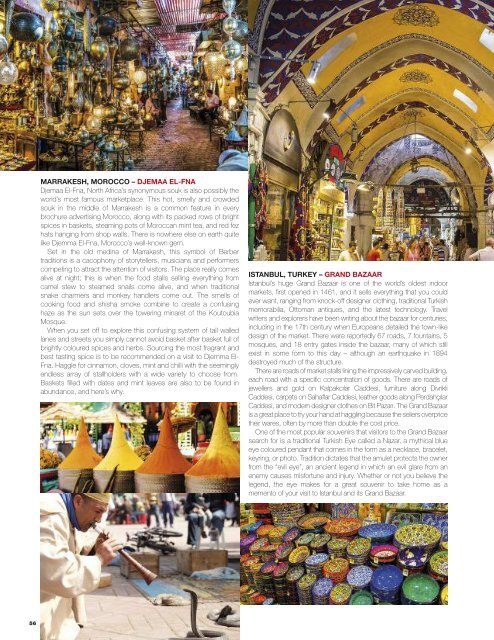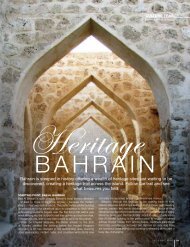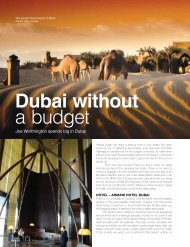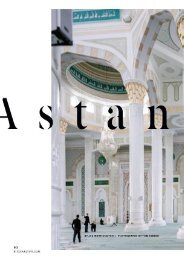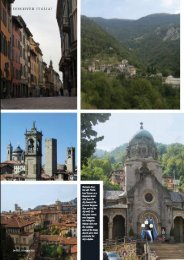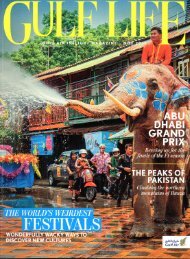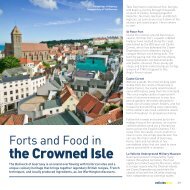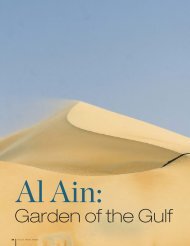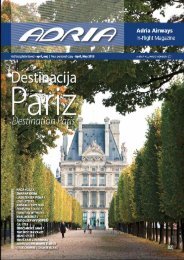Create successful ePaper yourself
Turn your PDF publications into a flip-book with our unique Google optimized e-Paper software.
MARRAKESH, MOROCCO – DJEMAA EL-FNA<br />
Djemaa El-Fna, North Africa’s synonymous souk is also possibly the<br />
world’s most famous marketplace. This hot, smelly and crowded<br />
souk in the middle of Marrakesh is a common feature in every<br />
brochure advertising Morocco, along with its packed rows of bright<br />
spices in baskets, steaming pots of Moroccan mint tea, and red fez<br />
hats hanging from shop walls. There is nowhere else on earth quite<br />
like Djemma El-Fna, Morocco’s well-known gem.<br />
Set in the old medina of Marrakesh, this symbol of Berber<br />
traditions is a cacophony of storytellers, musicians and performers<br />
competing to attract the attention of visitors. The place really comes<br />
alive at night; this is when the food stalls selling everything from<br />
camel stew to steamed snails come alive, and when traditional<br />
snake charmers and monkey handlers come out. The smells of<br />
cooking food and shisha smoke combine to create a confusing<br />
haze as the sun sets over the towering minaret of the Koutoubia<br />
Mosque.<br />
When you set off to explore this confusing system of tall walled<br />
lanes and streets you simply cannot avoid basket after basket full of<br />
brightly coloured spices and herbs. Sourcing the most fragrant and<br />
best tasting spice is to be recommended on a visit to Djemma El-<br />
Fna. Haggle for cinnamon, cloves, mint and chilli with the seemingly<br />
endless array of stallholders with a wide variety to choose from.<br />
Baskets filled with dates and mint leaves are also to be found in<br />
abundance, and here’s why.<br />
ISTANBUL, TURKEY – GRAND BAZAAR<br />
Istanbul’s huge Grand Bazaar is one of the world’s oldest indoor<br />
markets, first opened in 1461, and it sells everything that you could<br />
ever want, ranging from knock-off designer clothing, traditional Turkish<br />
memorabilia, Ottoman antiques, and the latest technology. Travel<br />
writers and explorers have been writing about the bazaar for centuries,<br />
including in the 17th century when Europeans detailed the town-like<br />
design of the market. There were reportedly 67 roads, 7 fountains, 5<br />
mosques, and 18 entry gates inside the bazaar, many of which still<br />
exist in some form to this day – although an earthquake in 1894<br />
destroyed much of the structure.<br />
There are roads of market stalls lining the impressively carved building,<br />
each road with a specific concentration of goods. There are roads of<br />
jewellers and gold on Kalpakcılar Caddesi, furniture along Divrikli<br />
Caddesi, carpets on Sahaflar Caddesi, leather goods along Perdahçılar<br />
Caddesi, and modern designer clothes on Bit Pazarı. The Grand Bazaar<br />
is a great place to try your hand at haggling because the sellers overprice<br />
their wares, often by more than double the cost price.<br />
One of the most popular souvenirs that visitors to the Grand Bazaar<br />
search for is a traditional Turkish Eye called a Nazar, a mythical blue<br />
eye coloured pendant that comes in the form as a necklace, bracelet,<br />
keyring, or photo. Tradition dictates that the amulet protects the owner<br />
from the “evil eye”, an ancient legend in which an evil glare from an<br />
enemy causes misfortune and injury. Whether or not you believe the<br />
legend, the eye makes for a great souvenir to take home as a<br />
memento of your visit to Istanbul and its Grand Bazaar.<br />
56<br />
FOOD & TRAVEL ARABIA


